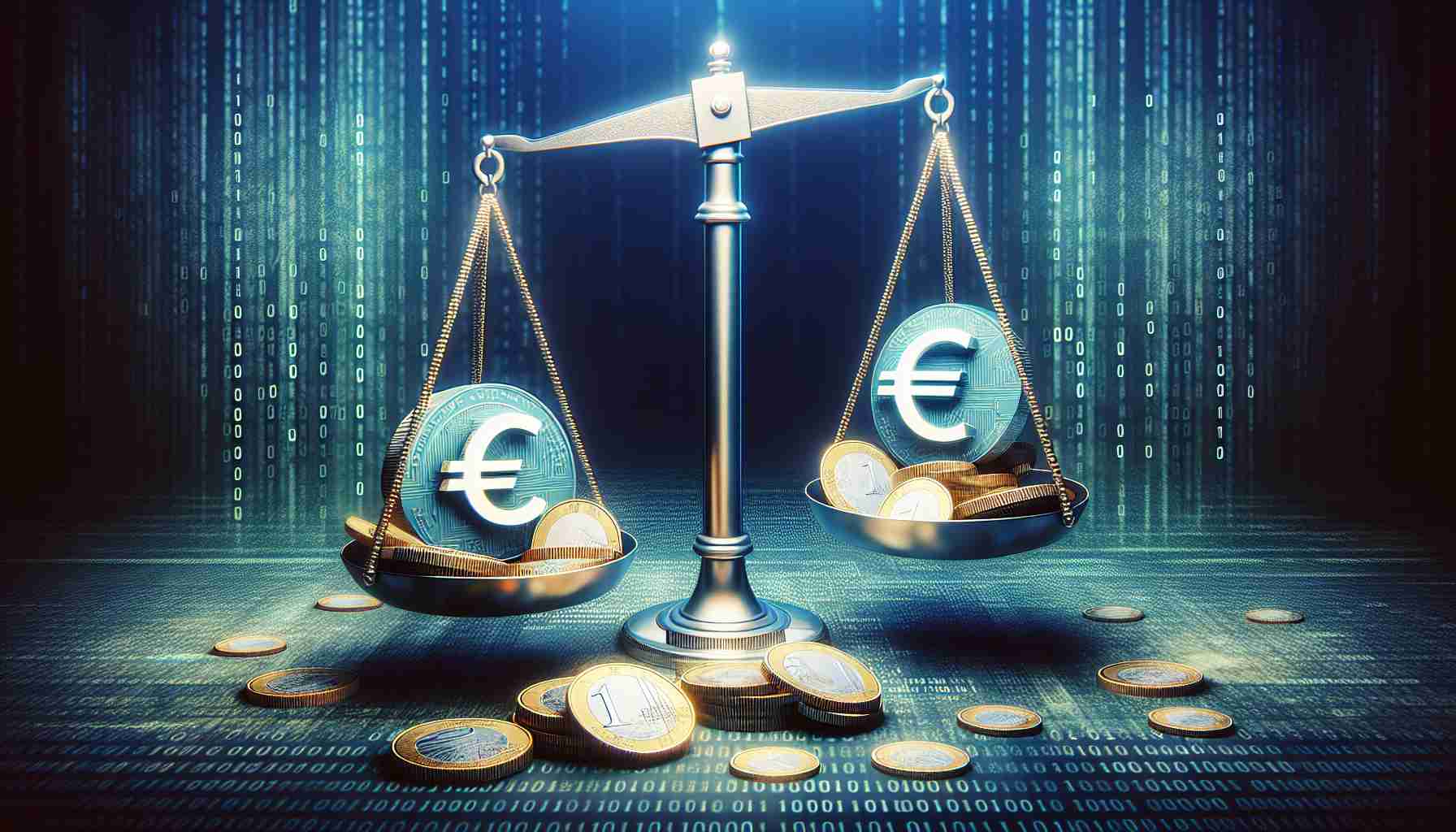Euro stablecoins are swiftly gaining attention in the evolving cryptocurrency landscape, as they emerge as formidable contenders to their US dollar counterparts. Even under the tightening grip of European regulation, these digital currencies have upheld a steady value, tethered to the euro. With a surge in transactions ascending to noteworthy highs, these stablecoins are taking significant strides in both adoption and popularity.
A recent upswing in transaction volume, topping $40 million in weekly trades, hints at an accelerated embrace within European boundaries and beyond. Historically trailing behind the crypto enthusiasm of the US and the Asia-Pacific, Europe is now witnessing a pivotal shift in the tide. The stablecoins, backed by the perceived stability of the eurozone economy, are becoming a favored asset among investors diversifying their digital portfolios.
The strategic pivot of crypto platforms, like Binance and Kraken, in adjusting their roster to align with Europe’s stringent crypto framework, has fortified the standing of euro stablecoins. These platforms are setting up to conform to the Markets in Crypto Assets (MiCA), a regulatory structure poised to establish clarity and safety in cryptocurrency dealings. While restriction might be the initial response, the budding trust in regulatory compliance could serve as a growth catalyst.
Although falling short of the voluminous dominance of dollar-stabilized coins, euro alternatives are carving their niche. Anchored’s AEUR, for example, commands over half of the euro stablecoin market’s transactions. The momentum around these assets is expected to proliferate with the application of MiCA, elevating euro-centric trades.
Amid regulatory challenges, the buoyant trajectory of euro-backed cryptocurrencies sparks contemplation on the future equilibrium of stablecoin supremacy. The successful companies in the unfolding regulatory framework will likely attract those in pursuit of dependable, aligned investment avenues. As euro stablecoins continue their ascent, the potential reshaping of digital asset dominance remains an intriguing prospect.
Understanding Euro-Based Stablecoins in the Digital Asset Space
Euro-based stablecoins are gaining increasing prominence in the digital currency market, providing an alternative to the more widespread US dollar-based stablecoins. Their value is pegged to the euro, offering stability akin to fiat currency within the volatile landscape of cryptocurrencies. As the European cryptocurrency market catches up with its global counterparts, these stablecoins present an attractive option for those wishing to hedge against currency risk or conduct business with a euro-centric focus.
The rise of euro stablecoins can largely be attributed to the perceived stability of the eurozone’s economy and the resultant investor confidence. Moreover, an increase in practical applications, such as cross-border transactions and remittances within the European market, has likely contributed to their heightened adoption. With prominent crypto exchanges like Binance and Kraken integrating these assets into their platforms, accessibility and liquidity of euro-based stablecoins have further improved, fostering wider adoption.
Key Questions Answered:
– Why are euro stablecoins becoming more popular? Euro stablecoins are becoming more popular due to the increased stability they offer as compared to cryptocurrencies, the growing need for non-USD denominated stable assets, and the impending regulation in Europe that could foster a safer and more trustworthy cryptocurrency environment.
– What are the challenges faced by euro stablecoins? One of the primary challenges is competing with the established dominance of USD-based stablecoins. Regulatory uncertainties and harmonization across various jurisdictions within the EU also pose potential issues, as does the need to ensure robust and transparent backing of these stablecoins.
– What regulation will affect euro stablecoins? The Markets in Crypto Assets (MiCA) regulation in the EU is expected to provide a comprehensive regulatory framework for crypto assets, including stablecoins. This will likely influence how euro-based stablecoins operate, ensuring high standards of consumer protection and financial stability.
Advantages and Disadvantages of Euro-Based Stablecoins:
Advantages:
1. Stability: Euro stablecoins offer stability reflecting the euro’s value, making them less volatile than unpegged cryptocurrencies.
2. Diversification: They provide an alternative for diversification away from USD-denominated assets.
3. Regulatory Alignment: The adoption of MiCA could enhance consumer trust and protection in the European cryptocurrency market.
4. Eurozone Transactions: They facilitate easier transaction processing within the eurozone, potentially reducing currency conversion costs.
Disadvantages:
1. Dominance of USD: The pervasive use of the dollar in global finance makes USD-based stablecoins more desired in some contexts.
2. Fragmentation: The European market is fragmented with many member states, potentially complicating the widespread adoption of euro stablecoins.
3. Liquidity Challenges: Euro stablecoins may struggle with liquidity issues compared to their USD-stablecoin counterparts.
4. Implementation of Regulations: The process of implementing new regulations, such as MiCA, might initially slow down adoption as platforms adjust to comply.
Regarding related links and further reading about cryptocurrencies and stablecoins, readers can visit reputable financial news websites or official regulatory body homepages for the most current information. One such source could be European Commission, where visitors can find official information on European financial regulations and initiatives.
As euro stablecoins continue to develop traction, the unfolding regulatory landscape and market dynamics will significantly determine their role in the global digital asset economy. Whether they will rival or complement their USD-based counterparts remains to be seen, making the future of euro stablecoins a compelling focus for investors and regulators alike.


